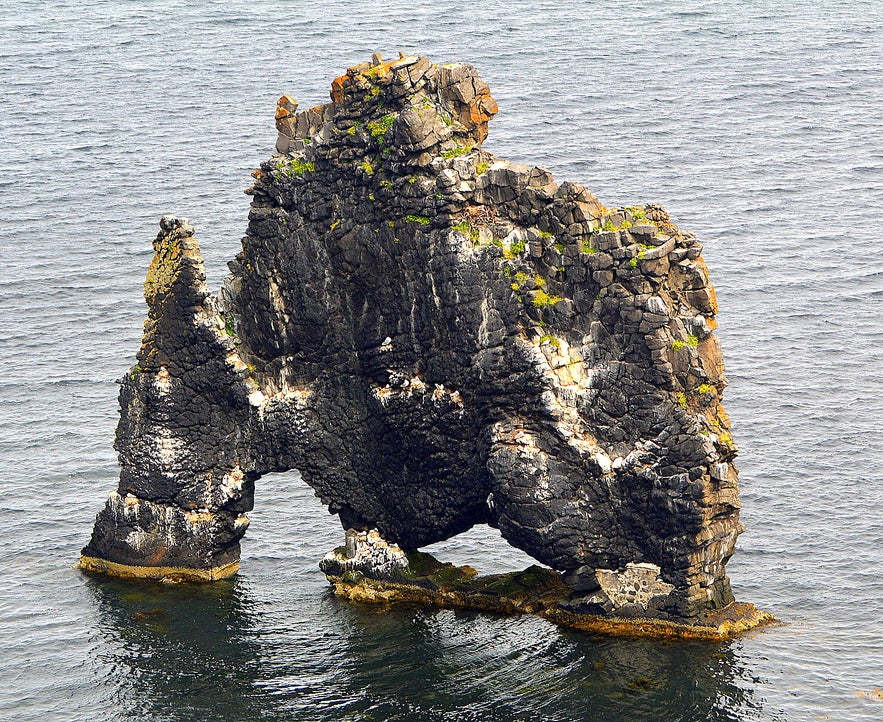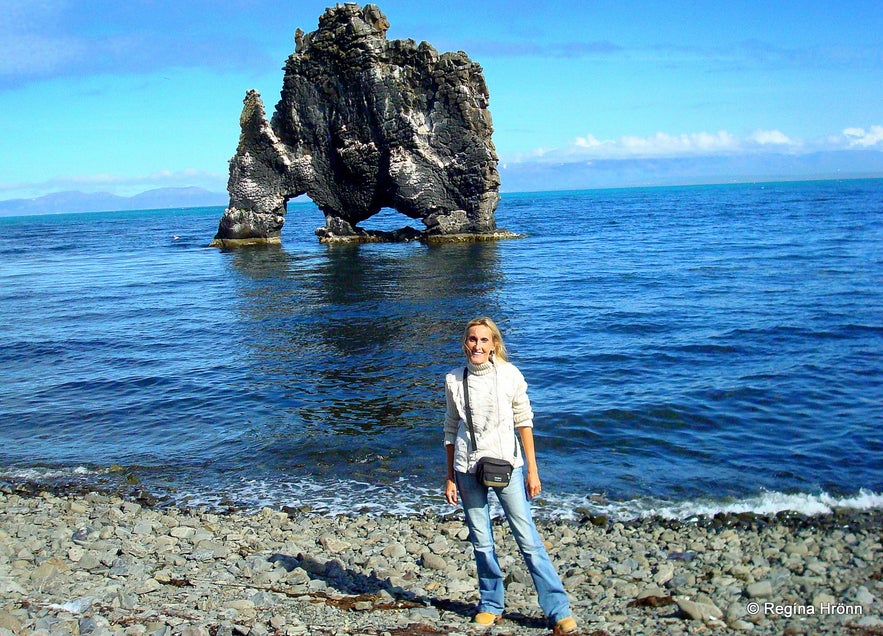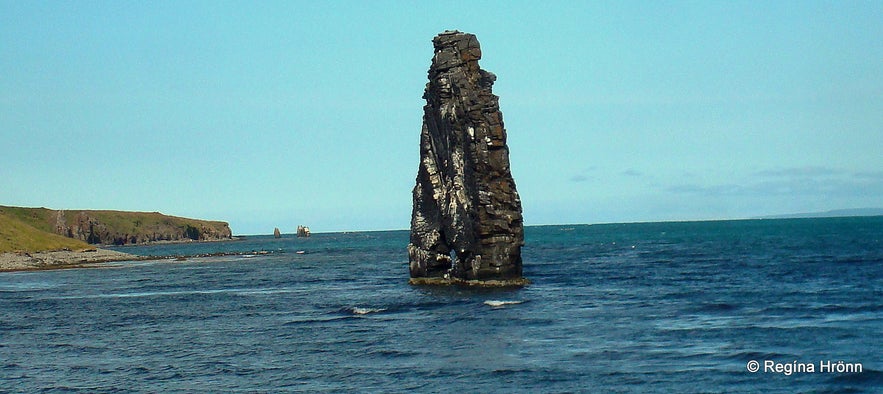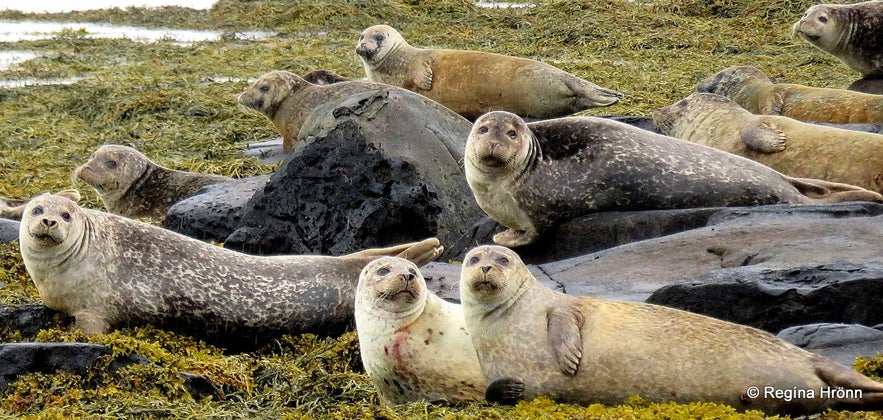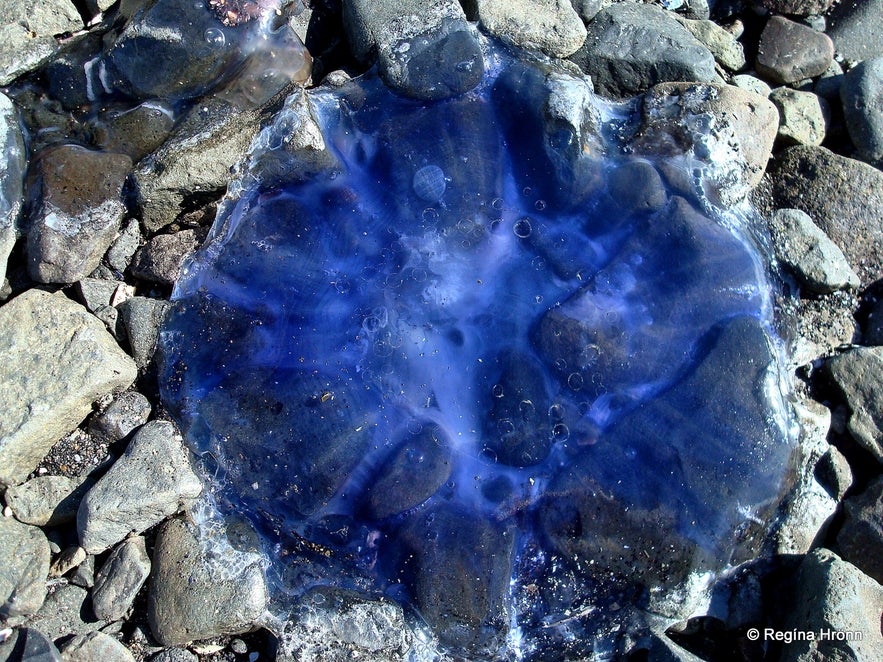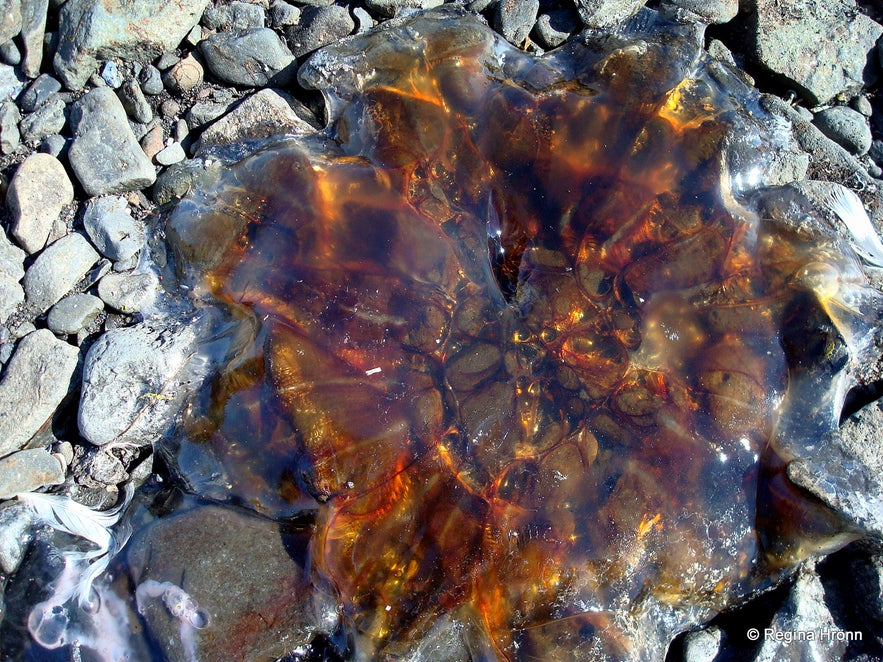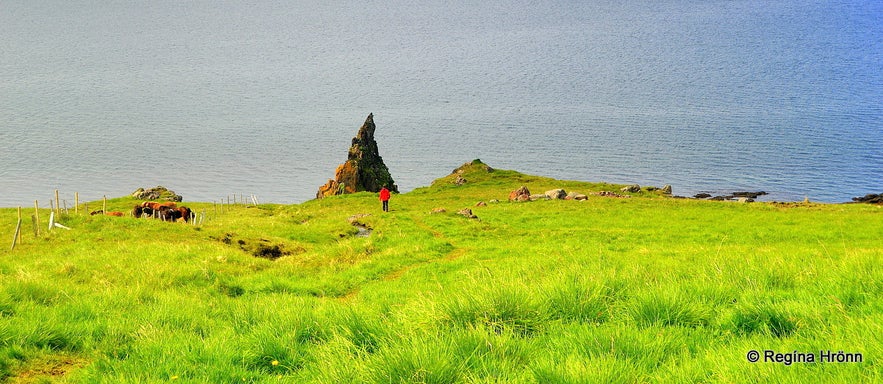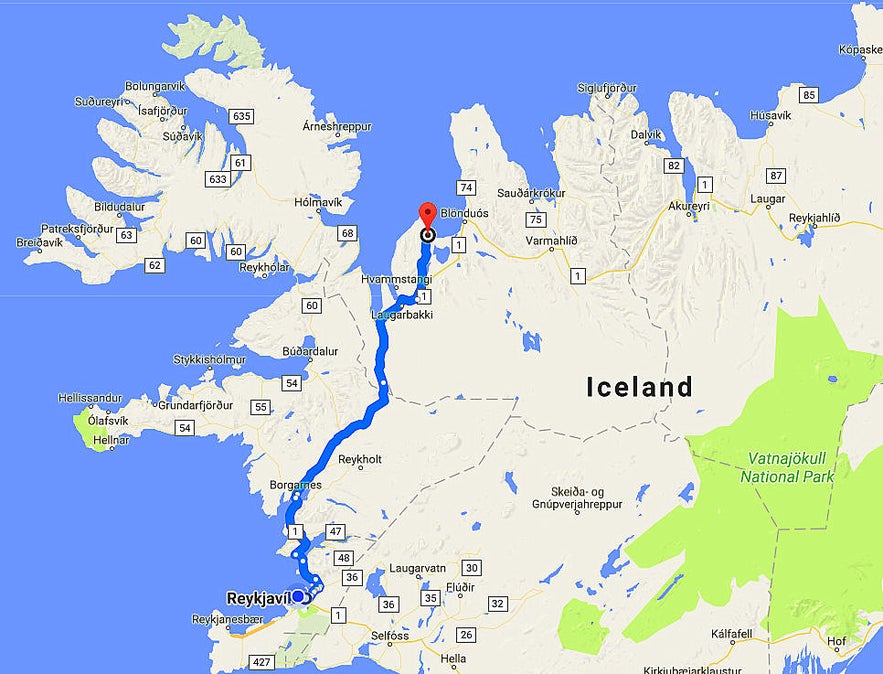
The majestic Hvítserkur Sea Stack - the Troll of North-West Iceland
On Vatnsnes peninsula in North-West Iceland, some 50 meters offshore stands the majestic Hvítserkur, a 15-meter tall monolith or sea-stack, an eroded volcanic dyke.
It looks like an animal of some sort, an elephant or a rhino; or even a dinosaur drinking.
Top photo: Hvítserkur
It is quite spectacular and well worth a visit. Especially in the summertime, when you will find a lot of fulmar nesting on it, so it seems to be alive.
It is half-white from their guano, thus the name Hvítserkur; "hvít-" = white and "-serkur" = a long shirt.
I just love monoliths like this one, and it is a big tourist attraction!
On the beach by Hvítserkur monolith
The legend goes that Hvítserkur is a petrified troll. The troll lived in Strandir in the Wesfjords and wanted to tear down the bells at the Þingeyraklaustur convent.
The Icelandic trolls are not Christian and don't like the sound or sight of churches or church bells.
Fortunately, the troll got caught by the first rays of the sun and, as we all know, then trolls turn into stone by daylight ;)
See also my travel-blogs:
The historic Þingeyrakirkja Church in North Iceland - one of Iceland's most beautiful Churches
The remote Strandir in the Westfjords of Iceland - Stillness & Sorcery
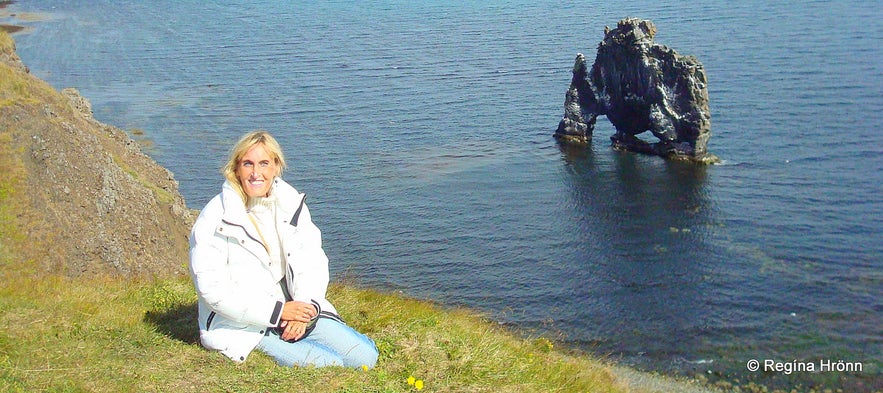
Admiring Hvítserkur from afar
The less fun, so to speak, version is that Hvítserkur is a volcanic dyke, which has been eroded by the sea. I am not a geologist, so I have to get information from geology books and helpful geologists.
Hvítserkur was in danger of sea erosion, and its base had to be strengthened with concrete. As I said before then Hvítserkur is both around 15-metres high and wide, but only 1-2 metres thick, which makes it unstable.
In 1955 it was so unstable that the locals started a collection to save this beautiful dyke. The "legs" furthest to the right used to have a hole in them, but it was filled up with concrete.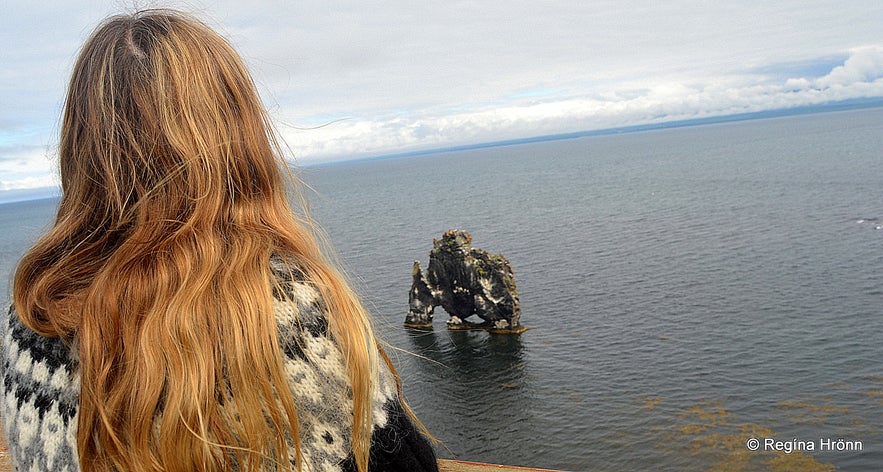
Admiring Hvítserkur from the observation platform
In 1963 an earthquake of a whopping 7 on the Richter scale shook Skagafjörður in North Iceland. It is very likely that Hvítserkur would have collapsed were it not for the reinforcement with the concrete.
So we can thank the locals for saving Hvítserkur :)
My photo below shows another angle of Hvítserkur, which makes it look quite different, and you see how thin it really is. I took this photo the only time I was able to fight off the cranky Arctic tern and carry on along the shoreside.
Explanations about the Arctic tern further down in this travel-blog ;)
Hvítserkur looks quite different from this angle
A gravel road leads down to Hvítserkur from Ósar hostel which takes you to a parking lot where there are benches and tables.
You can either see Hvítserkur from above or walk down to it.
A trail leads to it from the parking lot, and from there you can see it from above. From there is a steep trail leading you to the beach.
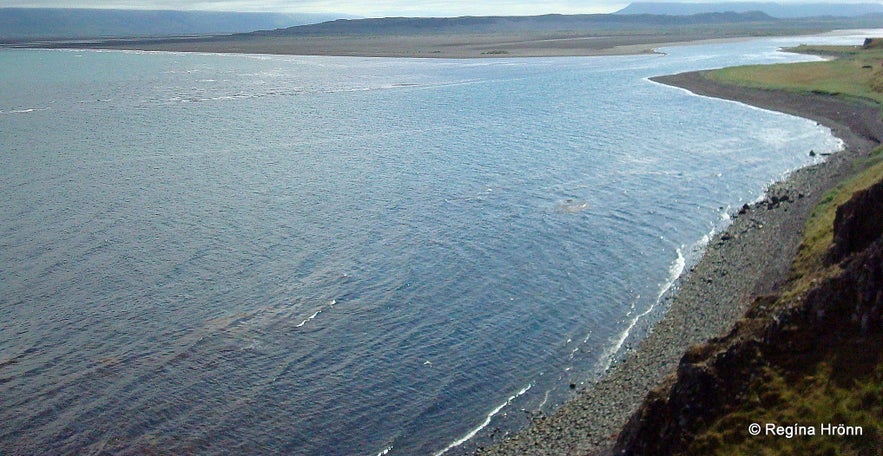
The beach leading to Hvítserkur monolith
It is also possible to go straight down to the beach from the parking lot, from where there is an easy walk down. But there is one hindrance in the summertime as the cranky Arctic tern may prevent you from reaching Hvítserkur on that route.
The Arctic tern is very annoying here in Iceland in the summertime! There were so many of them there, but one, in particular, attacked everything that moved; so get yourself a stick or even better an umbrella and chase them away when they attack.
They will not give up that easily though, and you might be the one having to retreat.
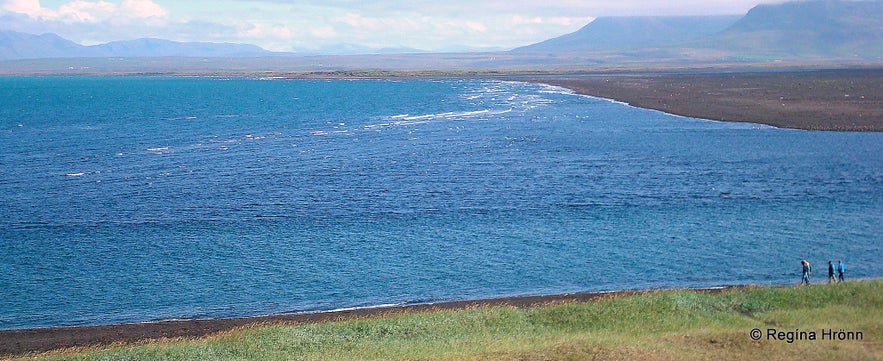
People on their way to visit Hvítserkur
As so many times you could see me running away in panic from this cranky bird, which loves attacking me :( The last time I visited Hvítserkur, I wasn't even able to drive this cranky bird away and had to return the same way from where I went down to the beach.
Next time I will succeed ;)
I have only once made it all the way to Hvítserkur, and the tide was coming in. But on low tide, it is possible to walk straight down to the monolith, which is 50 metres offshore in shallow waters.
Seals on the Hvítanes peninsula in the Westfjords
My photos from that visit are from 2010, and I need to go there again to take better photos. I will fight the Arctic tern for my right to visit Hvítserkur. Or not ;)
This area is home to one of the largest seal colonies in Iceland and in Hvammstangi village, which is on the opposite side of the peninsula, one can visit the Icelandic Seal Centre.
There are a lot of seals resting on the beach, and they are quite a tourist attraction.

You see how far away the seals are from the opposite shore
You will not see them as close as they are in my photos, as they rest on the opposite beach and on reefs, so you will need a good zoom to get good photos.
No drones though, as that will disturb them. And we do not want to disturb animals in their natural habitat.

The seals are this far away
While I was visiting the shore was covered in very big, multi-coloured jellyfish making this even more special.
It was awesome seeing this, never in Iceland have I encountered such beautiful big jellyfish.
They were blue...
and golden...
There were just so many of them; I have never seen so many in one place here in Iceland.
There is another Hvítserkur in Iceland: The majestic Waterfall Hvítserkur in Fitjaá River in West-Iceland
On the western side of the Vatnsnes peninsula, you will find another monolith, the Ánastaðastapi rock, which is also worth a visit. Like Hvítserkur then Ánastaðastapi rock can barely be seen from the road.
Ánastaðastapi rock
Ánastaðastapi rock on Vatnsnes peninsula
To visit it walk down a steep grassy hill for a couple of minutes or so on a path that leads to the monolith. It is much more colourful than Hvítserkur, but on the other hand, Hvítserkur looks like a dinosaur while Ánastaðastapi is just a beautiful monolith.
The winter of 1882 was a harsh one with drift ice closing off this area. Fortunately for the inhabitants 32 leviathans - big whales - also drifted ashore, saving the inhabitants of this area from starving.
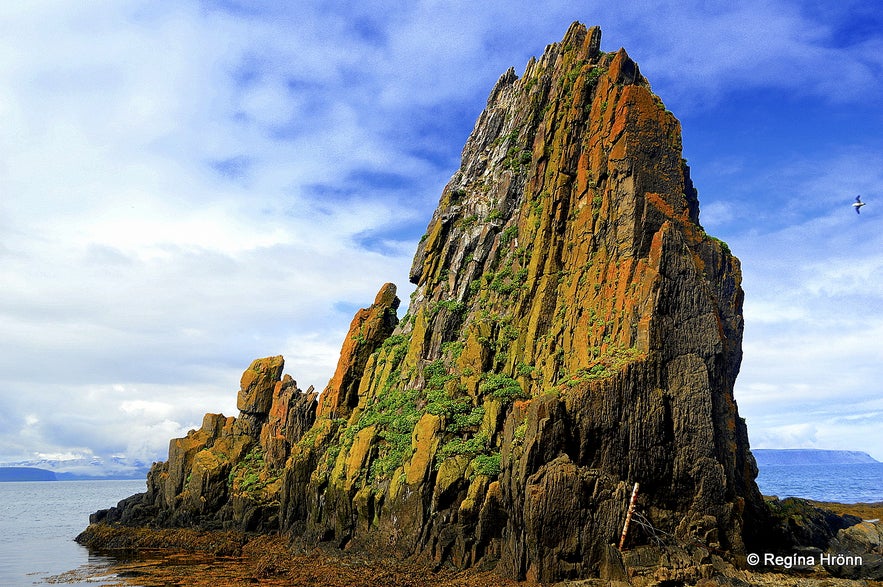
Colourful Ánastaðastapi rock on Vatnsnes peninsula
A little bit further you will see a beautiful white and green painted roundup for sheep, the Hamarsrétt roundup. You will see such roundups in many places in Iceland.
The Icelandic sheep roam around free in the summertime and are gathered in September.
The sheep are then separated in the roundups. What is so special about Hamarsrétt is its location, right by the beach.
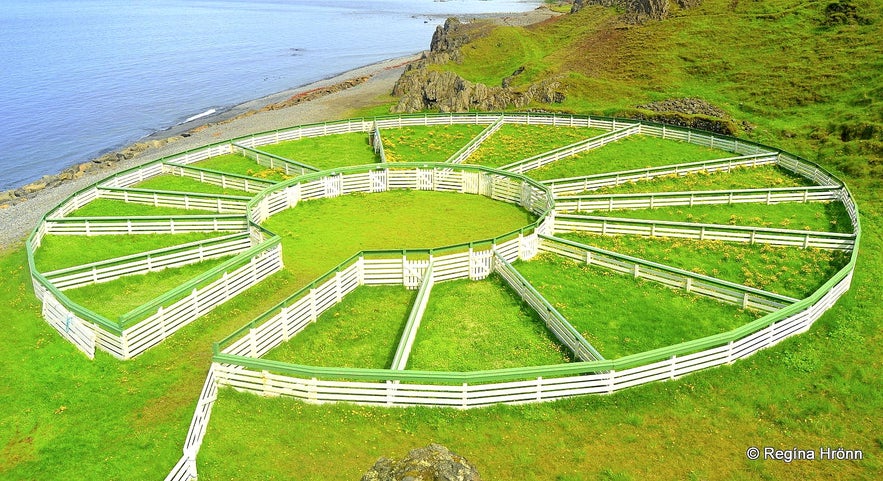
Hamarsrétt roundup
To visit the Vatnsnes peninsula, you can rent a car in Reykjavík and drive on the bad gravel road from Hvammstangi village, which is 197 km north of Reykjavík, or take road 711 off ring-road 1 and make a semicircle on Vatnsnes peninsula. From road 711 there are 30 km to Hvítserkur.
I found one guided tour of this area Wild North Super Jeep Tour | Grábrók Crater, Kolugljúfur Canyon & Borgarvirki Citadel.
There are many more things to see here on the Vatnsnes peninsula, which I have written about in other travel-blogs:
Borgarvirki fortress on Vatnsnes peninsula
The historic Þingeyrakirkja Church in North Iceland - one of Iceland's most beautiful Churches
Kolugljúfur canyon and the Giantess on the other side of ring-road 1
Have a lovely time in northwest Iceland :)
Source: Vegvísir um jarðfræði Íslands by Snæbjörn Guðmundsson
其他有意思的博客
冰岛最浪漫的角落
对于很多人,遥远的冰岛有着世界尽头的神秘,有着区别于巴黎、马尔代夫、自成一体的浪漫。没有埃菲尔铁塔和蒂凡尼,没有热带沙滩,而是在冰川、火山、苔藓地的背景下蜜月旅拍、婚拍,甚至举办一场冰岛婚礼。来冰岛旅行,多是要跨千山万水、飞跃大洋大陆,很有一点“万水千山陪你走过”的史诗感。难怪很多人说,光是冰岛二字,就足够浪漫了。 冰岛虽然不大,但是地貌极其丰富,不同的自然景观自然有不同的气质。这一篇,就挑阅读更多从极光观测到摄影-到底该不该来冰岛看极光
很多朋友都想来冰岛看极光,但是冰岛到底适不适合看极光呢?几月、什么季节能看到极光?是不是一定要参加北极光旅行团?如何能拍摄出美丽的极光照片呢?在冰岛住了好几年了,从刚开始逢极光必出门,到如今家里阳台就能看极光,我对在冰岛看极光的了解和经验,也算得上大半个专家了,且听我娓娓道来吧。 到底该不该来冰岛看极光呢?最坦诚的答案是,不要只为了看极光而看极光。 极光原理 太阳活动→太阅读更多
迷失冰岛的米湖游览推荐|不只有温泉的地热宝藏区
我在冬夏秋均到访过米湖,看过米湖的不同面。一直以来,米湖到底值不值得去是很多游客争论的问题。有些人觉得这里是来冰岛旅行的必去目的地,有些人则说米湖“太丑了”,连照片都不想多拍几张。那米湖到底值不值得来呢?到底怎么玩呢? 米湖的风景 北部的米湖,因地理位置相距首都雷克雅未克略远,很多来冰岛的短途游客选择放弃,其实米湖应该是和黄金圈、南岸沿线至冰湖齐名的冰岛景色,这里冷热相融,可谓最冰岛,尤其阅读更多

将冰岛最大的旅行平台下载到您的手机中,一站式管理您的整个行程
使用手机摄像头扫描此二维码,然后点击显示的链接,将冰岛最大的旅行平台添加到您的手机中。输入您的电话号码或电子邮件地址,以接收包含下载链接的短信或电子邮件。

